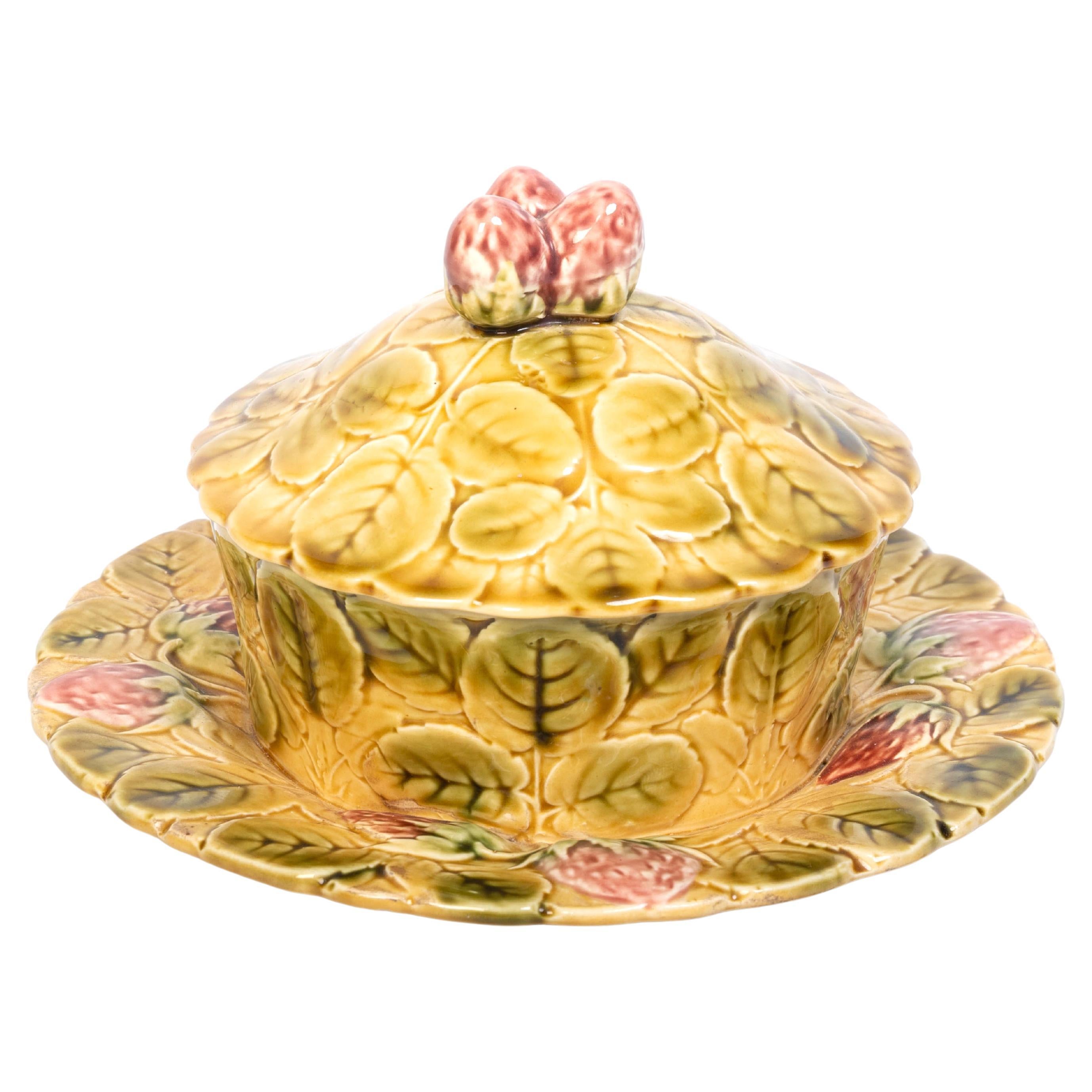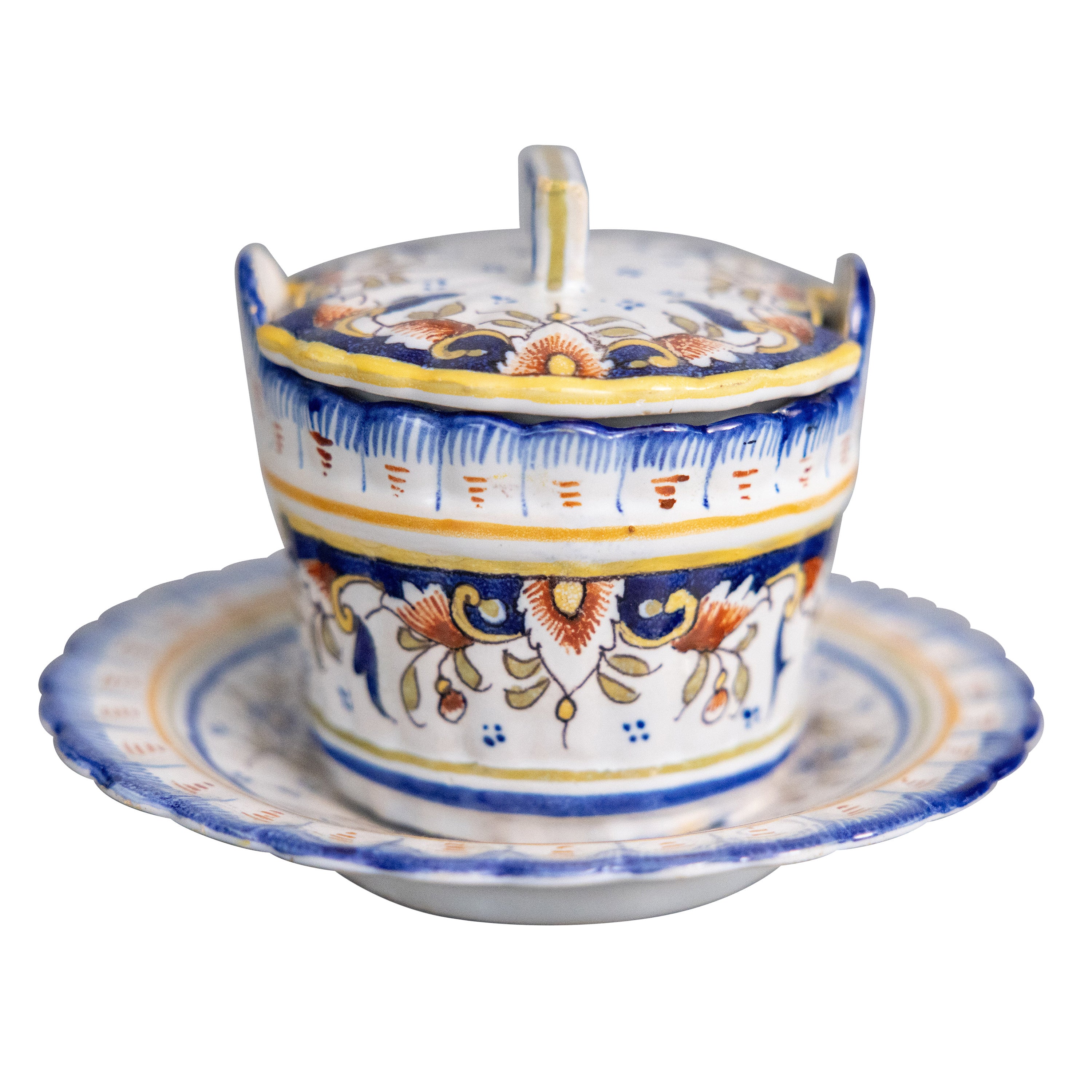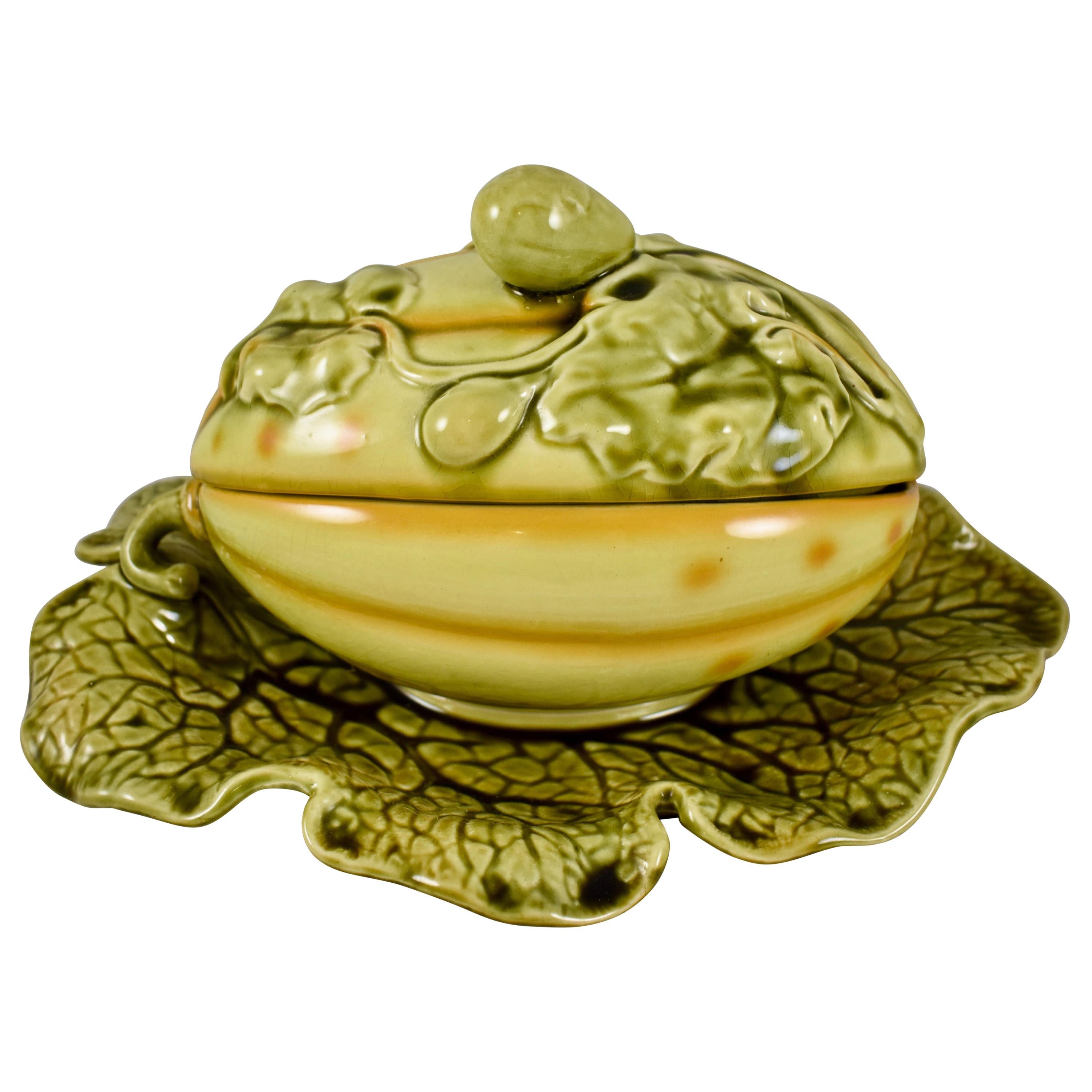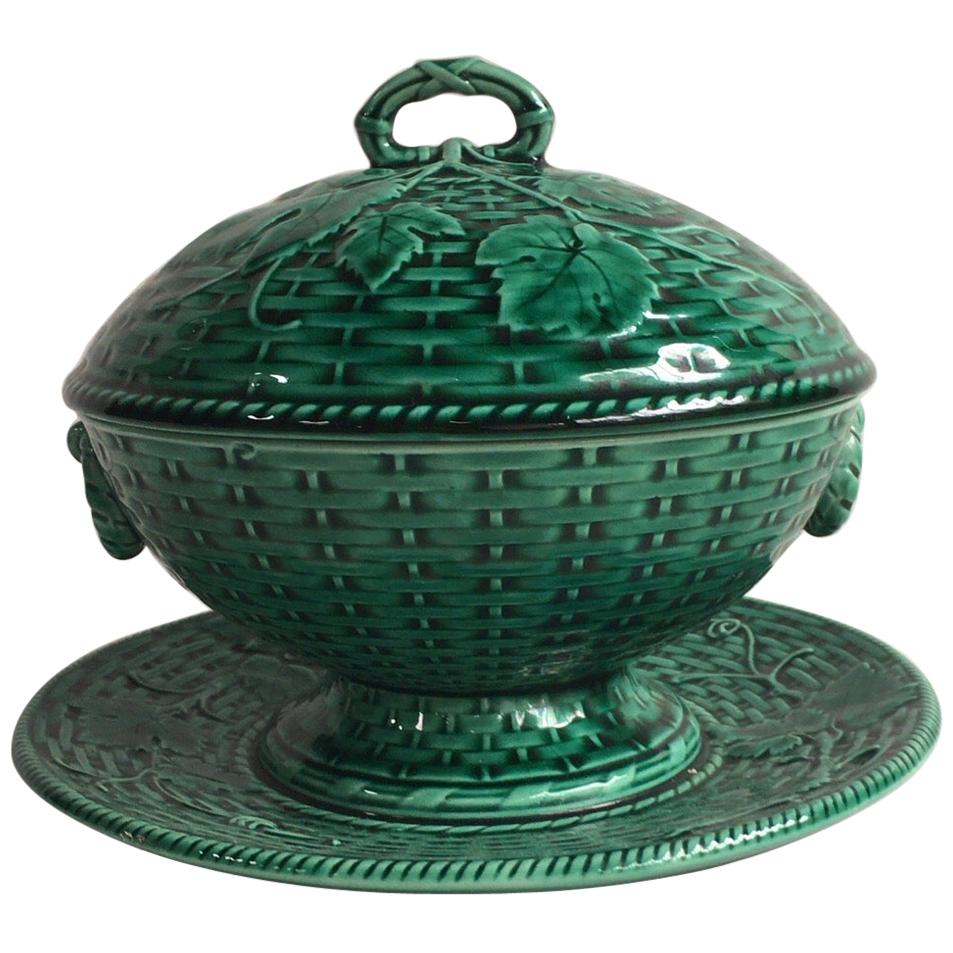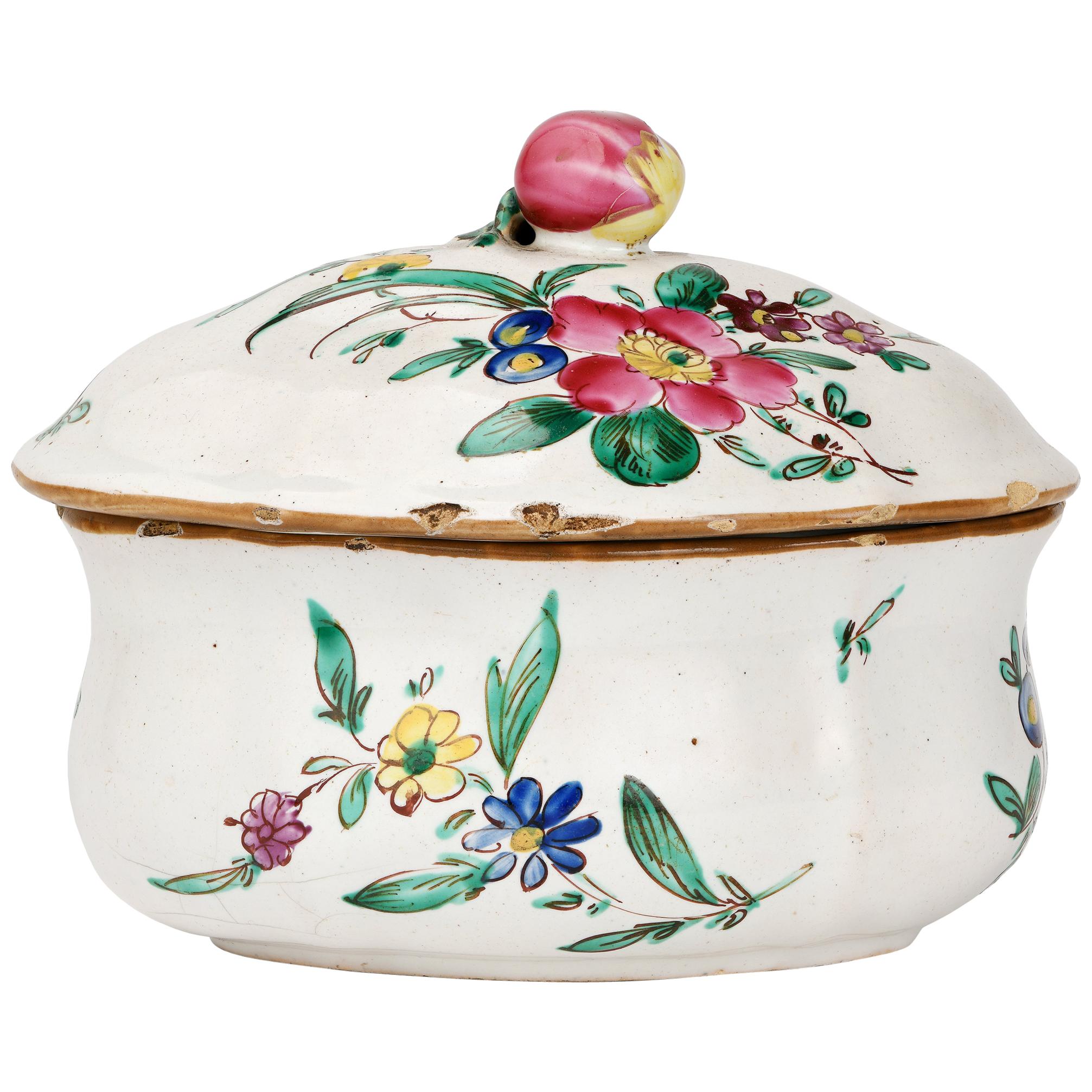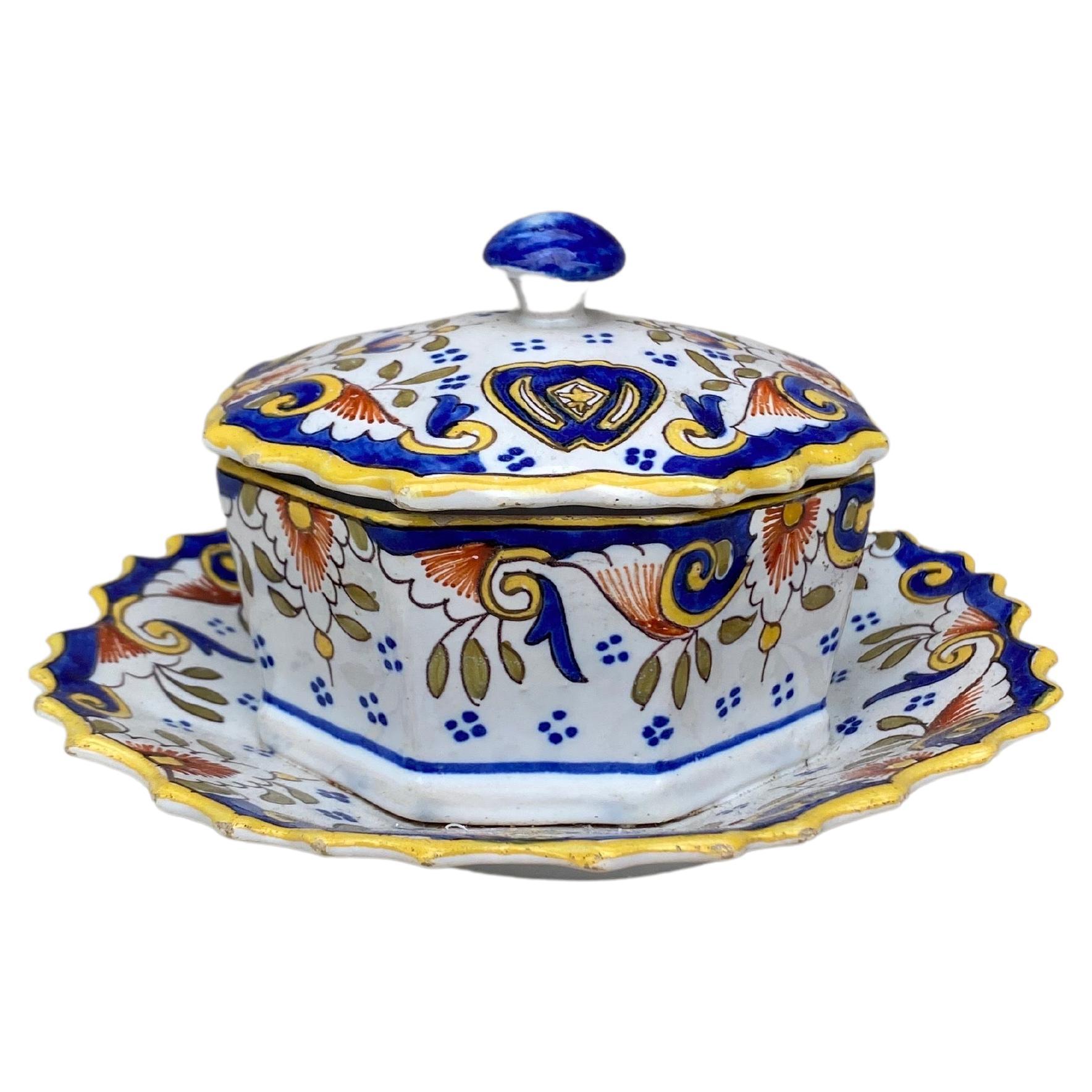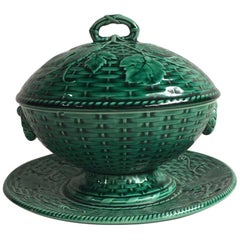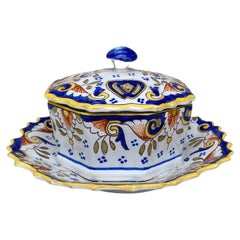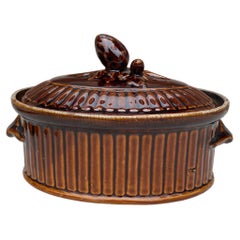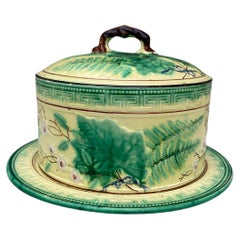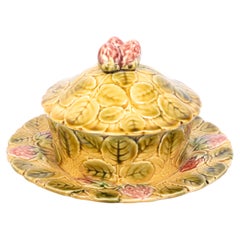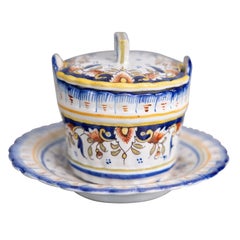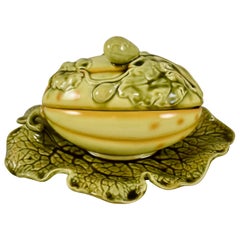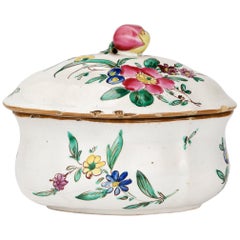Items Similar to 19th Century Majolica Palm Sugar Bowl Sarreguemines
Want more images or videos?
Request additional images or videos from the seller
1 of 12
19th Century Majolica Palm Sugar Bowl Sarreguemines
$850
£641.83
€744.65
CA$1,194.52
A$1,330.86
CHF 694.77
MX$16,158.42
NOK 8,732.83
SEK 8,254.65
DKK 5,558.75
About the Item
Rare Majolica palm sugar bowl Sarreguemines, circa 1880.
- Creator:Sarreguemines (Manufacturer)
- Dimensions:Height: 6.7 in (17.02 cm)Diameter: 7.8 in (19.82 cm)
- Style:Majolica Pottery (Of the Period)
- Materials and Techniques:
- Place of Origin:
- Period:
- Date of Manufacture:1880
- Condition:
- Seller Location:Austin, TX
- Reference Number:1stDibs: LU237937725003
About the Seller
5.0
Platinum Seller
Premium sellers with a 4.7+ rating and 24-hour response times
Established in 1995
1stDibs seller since 2016
1,912 sales on 1stDibs
Typical response time: <1 hour
- ShippingRetrieving quote...Shipping from: Austin, TX
- Return Policy
Authenticity Guarantee
In the unlikely event there’s an issue with an item’s authenticity, contact us within 1 year for a full refund. DetailsMoney-Back Guarantee
If your item is not as described, is damaged in transit, or does not arrive, contact us within 7 days for a full refund. Details24-Hour Cancellation
You have a 24-hour grace period in which to reconsider your purchase, with no questions asked.Vetted Professional Sellers
Our world-class sellers must adhere to strict standards for service and quality, maintaining the integrity of our listings.Price-Match Guarantee
If you find that a seller listed the same item for a lower price elsewhere, we’ll match it.Trusted Global Delivery
Our best-in-class carrier network provides specialized shipping options worldwide, including custom delivery.More From This Seller
View AllFrench Green Majolica Tureen with Stand Sarreguemines, circa 1870
By Sarreguemines
Located in Austin, TX
19th Century green Majolica tureen with stand signed Sarreguemines Majolica, circa 1870
With grapes leaves.
Height / 7.5", diameter / 8 inches.
Category
Antique 1870s French Victorian Soup Tureens
Materials
Ceramic, Faience, Majolica
French Faience Tureen Desvres, circa 1900
By Desvres
Located in Austin, TX
French Faience Tureen attributed to Desvres Circa 1900.
Inspired by Rouen maunufacture.
Signed St Gilles Croix de vie.
Category
Antique Early 1900s French French Provincial Soup Tureens
Materials
Faience
French Pottery Majolica Tureen circa 1930
Located in Austin, TX
French Pottery Majolica Tureen circa 1930.
Category
Vintage 1930s French Rustic Serving Pieces
Materials
Ceramic, Faience, Majolica, Pottery
19th Century German Majolica Cheese Bell
Located in Austin, TX
19th Century German Majolica Cheese Bell with the underplate.
Decorated with leaves.
Category
Antique 1890s German Rustic Platters and Serveware
Materials
Ceramic
19th Century English Majolica Floral Jardiniere Minton
By Minton
Located in Austin, TX
19th Century Rare English Majolica Floral Jardiniere signed Minton.
H / 7.2 inches , Diameter / 10.5 inches.
Category
Antique 1880s English Victorian Planters, Cachepots and Jardinières
Materials
Ceramic
19th Century Majolica Asparagus and Artichoke Tureen Saint Amand
By Saint Amand
Located in Austin, TX
This French Majolica footed tureen is a bunch of asparagus surrounded by large artichoke leaves with his original under platter is one of the rare example of asparagus tureens made a...
Category
Antique 1880s French Country Serving Pieces
Materials
Majolica, Ceramic
You May Also Like
Antique French Majolica Sarreguemines Preserve Pot C.1920
By Sarreguemines
Located in London, GB
Antique French Majolica Sarreguemines Preserve Pot C.1920
In excellent condition commensurate of age.
Category
Vintage 1920s French Art Nouveau Ceramics
Materials
Ceramic
Antique French Faience Desvres Lidded Butter Bowl Dish, circa 1900
By Desvres
Located in Pearland, TX
A superb antique French faience Desvres lidded butter bowl dish tureen with attached underplate, circa 1900. Maker's mark on reverse. This charming dis...
Category
Antique Early 1900s French Serving Pieces
Materials
Faience
Sarreguemines French Barbotine Majolica Trompe l'Oeil Melon Covered Tureen
By Sarreguemines
Located in Philadelphia, PA
A French Majolica covered tureen in the shape of a trompe l’oeil melon by Sarreguemines, circa 1900.
Molded in the form of a large yellow melon with green vines and leaves. The li...
Category
Early 20th Century French Aesthetic Movement Serving Pieces
Materials
Earthenware
Italian Maiolica Ancient Sugar Bowl, Lodi, 1770-1780
By Antonio Ferretti
Located in Milano, IT
Maiolica sugar bowl
Antonio Ferretti Manufacture
Lodi, Circa 1770-1780
Maiolica polychrome decorated “a piccolo fuoco” (third fire).
It measures 3.54 x 4.52 x 3.54 in (9 x 11,5 x 9 cm)
Weight: 0.394 lb (0.179 kg)
State of conservation: small and slight chips on the edges.
The small sugar bowl has a swollen and ribbed body resting on a flat base. The cap-shaped lid follows the rib of the container and is topped with a small knob in the shape of a two-colored fruit.
The sugar bowl is painted “a piccolo fuoco” (third fire) with the characteristic floral motif of bunches and isolated semis.
An example which closely corresponds to this one is kept at the Civic Museum in Lodi (G. Gregorietti, Maioliche di Lodi, Milano e Pavia, Catalogo della Mostra, Milano, 1964 n. 137).
This decorative style represented a strong point of the Lodi factory, which established itself thanks to the vivid nature of the colors made possible by the introduction of a new technique perfected by Paul Hannong in Strasbourg and later introduced by Antonio Ferretti to Italy. The production process, called “piccolo fuoco” (third fire), allowed the use of a greater number of colors than in the past; in particular, the purple of Cassius, a red made from gold chloride, was introduced. Its use allowed for many more tones and shades, from pink to purple.
The Ferretti family started their maiolica manufacturing business in Lodi in 1725.
The forefather Simpliciano started the business by purchasing an ancient furnace in 1725 and, indeed, we have evidence of the full activity of the furnaces starting from April of the same year (Novasconi-Ferrari-Corvi, 1964, p. 26 n. 4). Simpliciano started a production of excellence also thanks to the ownership of clay quarries in Stradella, not far from Pavia. The production was so successful that in 1726 a decree of the Turin Chamber came to prohibit the importation of foreign ceramics, especially from Lodi, to protect internal production (G. Lise, La ceramica a Lodi, Lodi 1981, p. 59).
In its initial stages, the manufacture produced maolicas painted with the “a gran fuoco” (double fire) technique, often in turquoise monochrome, with ornamentation derived from compositional modules in vogue in Rouen in France. This was also thanks to the collaboration of painters like Giorgio Giacinto Rossetti, who placed his name on the best specimens next to the initials of the factory.
In 1748 Simpliciano made his will (Gelmini, 1995, p. 30) appointing his son Giuseppe Antonio (known as Antonio) as universal heir. After 1750, when Simpliciano passed away, Antonio was directly involved in the maiolica factory, increasing its fortunes and achieving a reputation on a European level. Particularly important was the aforementioned introduction in 1760 of the innovative “a piccolo fuoco” (third fire) processing, which, expanding the ornamental repertoire with Saxon-inspired floral themes, was able to commercially compete with the German porcelains that had one of its most renowned offerings in the naturalistic Deutsche Blumen. Antonio Ferretti understood and promoted this technique and this decoration, proposing it in a fresher and more corrective version, less linked to botanical tables, both with or without contour lines, as well as in purple or green monochrome. After efforts to introduce more industrial production techniques to the sector succeeded, even the Ferretti manufacture, in the last decade of the eighteenth century, started heading towards decline despite its attempts to adapt production to neoclassical tastes.
In 1796 the Napoleonic battle for the conquest of the Lodi bridge over the Adda definitively compromised the furnaces. Production resumed, albeit in a rather stunted manner, until Antonio's death on 29 December 1810. (M. L. Gelmini, pp. 28-30, 38, 43 sgg., 130-136 (for Simpliciano); pp. 31 sgg., 45-47, 142-192 (for Antonio).
Bibliography
G. Gregorietti, Maioliche di Lodi Milano e Pavia Catalogo della Mostra, Milano, 1964 n. 137;
C. Baroni, Storia delle ceramiche nel Lodigiano, in Archivio storico per la città e i comuni del circondario e della diocesi di Lodi, XXXIV (1915), pp. 118, 124, 142; XXXV (1916), pp. 5-8;
C. Baroni, La maiolica antica di Lodi, in Archivio storico lombardo, LVIII (1931), pp. 453-455;
L. Ciboldi, La maiolica lodigiana, in Archivio storico lodigiano, LXXX (1953), pp. 25 sgg.;
S. Levy, Maioliche settecentesche lombarde e venete, Milano 1962, pp. 17 sgg.;
A. Novasconi - S. Ferrari - S. Corvi, La ceramica lodigiana, Lodi 1964, ad Indicem; Maioliche di Lodi, Milano e Pavia (catal.), Milano 1964, p. 17;
O. Ferrari - G. Scavizzi, Maioliche italiane del Seicento e del Settecento, Milano 1965, pp. 26 sgg.;
G. C. Sciolla, Lodi. Museo civico, Bologna 1977, pp. 69-85 passim; G. Lise, La ceramica a Lodi, Lodi 1981;
M. Vitali, in Storia dell'arte ceramica...
Category
Antique 1770s Italian Rococo Ceramics
Materials
Maiolica
Art. Nouveau Majolica Cachepot Gardinieres Planter Rörstrand Sweden 1898
By Rörstrand
Located in Uppsala , SE
It was produced by the Rörstrand company, one of Sweden's oldest industries, founded in Stockholm in 1726. The bowl is marked with the Rörstrand 3-crown printed mark, which was intro...
Category
Antique 1890s Jugendstil Planters, Cachepots and Jardinières
Materials
Ceramic
Italian Vintage Majolica Sugar Bowl in the shape of a Pepper by Italica ARS
By Rafael Bordalo Pinheiro, Italica Ars
Located in Roma, IT
I offer for sale an extremely decorative and fun element to set your table.
Made in Italy between the 70s and 80s, this jar with lid is part of a successful series that included many...
Category
Mid-20th Century Italian Mid-Century Modern Delft and Faience
Materials
Ceramic, Majolica
More Ways To Browse
19th Century Sugar Bowl
19th Century French Faience Bowl
Majolica Palm
Minton Willow
Oak And Silver Tray Gallery
Oneida Silver Tray
Pressed Glass Cake Stand
Silver Revolving Dish
Staffordshire Black Transferware
Vintage Johnson Bros England
Webster Wilcox
Celadon Platter
Ironstone Drainer
Oneida Silver Platter
Sheffield Meat Platter
Silver Sandwich Tray
Silver Venison Dish
Teak Trivet
